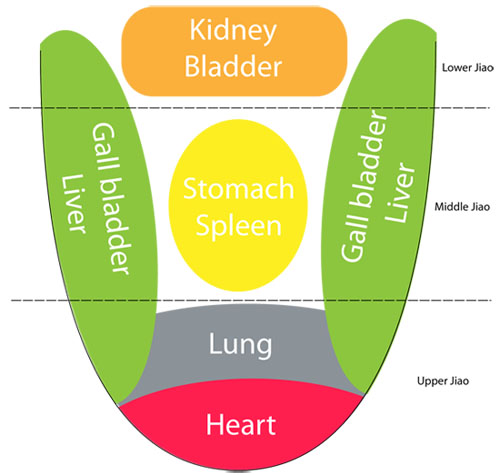TCM professionals use information gathered from the tongue to help make or confirm their diagnoses. But what are they looking for? It may seem strange when first asked to "stick out your tongue", but rest assured, its inclusion in the diagnostic process gives TCM practitioner vital information about your health.
It is believed that the health of the Zang-Fu (organ systems) are reflected on the tongue. Subtle changes in its appearance can signal changes in the state of Yin/Yang, and Qi/Blood within the body. Furthermore, the nature (hot/cold) and depth of penetration of a pathogenic factor can be seen, as well as whether or not a specific disease is in a state of progression or regression.

A TCM practitioner "reads" the tongue by observing its mapped segments, reflecting each of the TCM organ systems (Zang-Fu). Additionally, physiological components of the tongue such as shape, colour and coating are observed that help to further differentiate between patterns of disease.
A "healthy" tongue is pink-ish in colour, with a thin white-ish coating. The tongue itself is not too dry or moist, and has a body without any obvious areas of enlargement (i.e. you can't see any teeth marks). Conversely, a tongue reflecting Qi and/or Blood stagnation resulting from traumatic injury for example, will appear purple and may even have purple spots if there is significant blood stagnation. Someone experiencing insomnia may exhibit a tongue with a red tip, indicating that the reason for the insomnia is a flaring of heart fire, thereby confirming and/or giving the practitioner additional information on appropriate treatment (herbs, diet, acupuncture). Shape and coating vary to reflect your unique internal environment and/or systemic response to disease.
The inclusion of the tongue in the TCM diagnostic process is just one of the many tools employed by TCM practitioner that ensures you are getting the best and most appropriate treatment possible.

![Diseases, Symptoms, tcm, [tcmwindow.com]](/uploadFile/adImg/2015/11/11/f5cbfcc0-4df5-4646-9b9a-f316651a0199.jpg)





